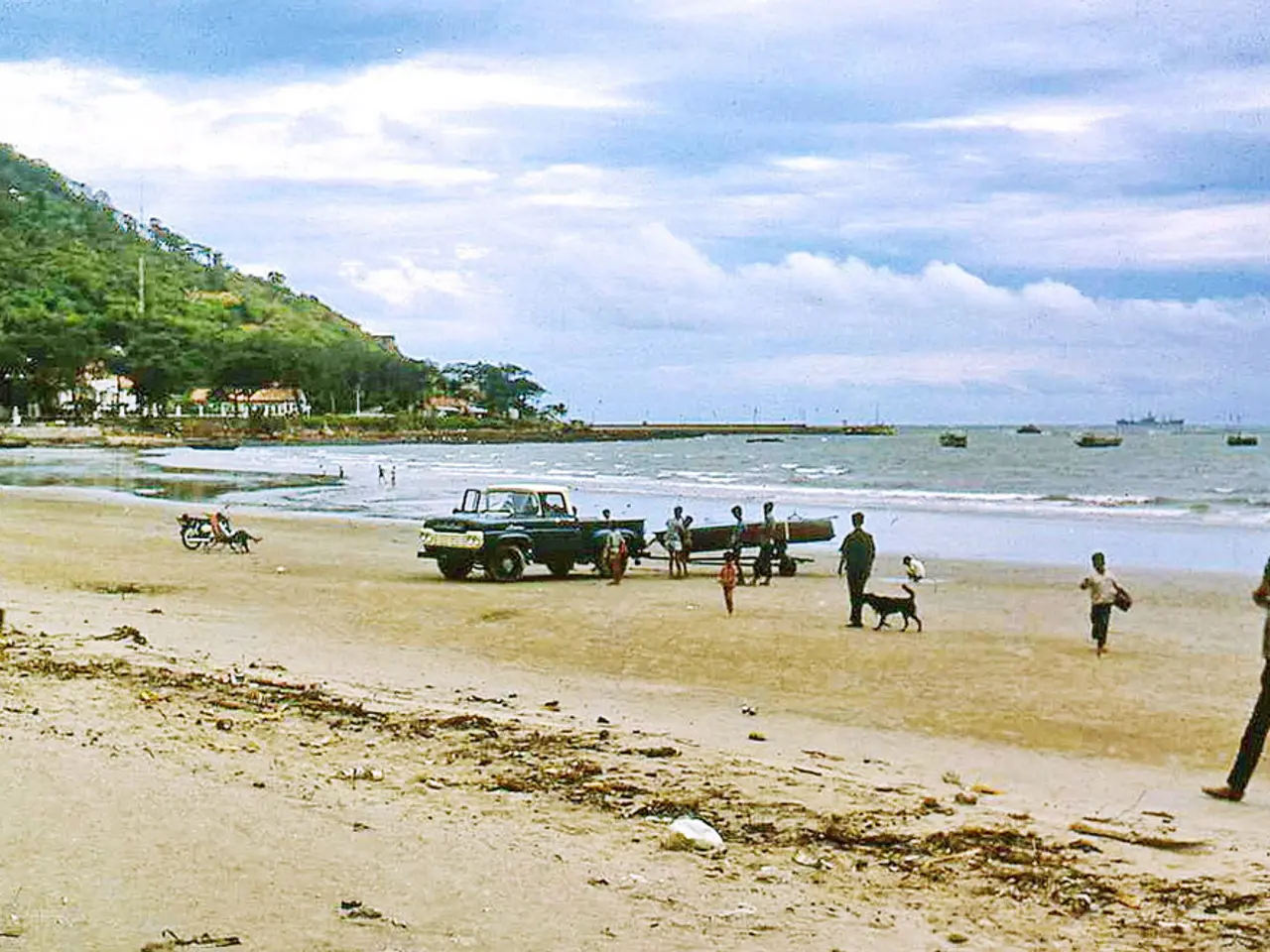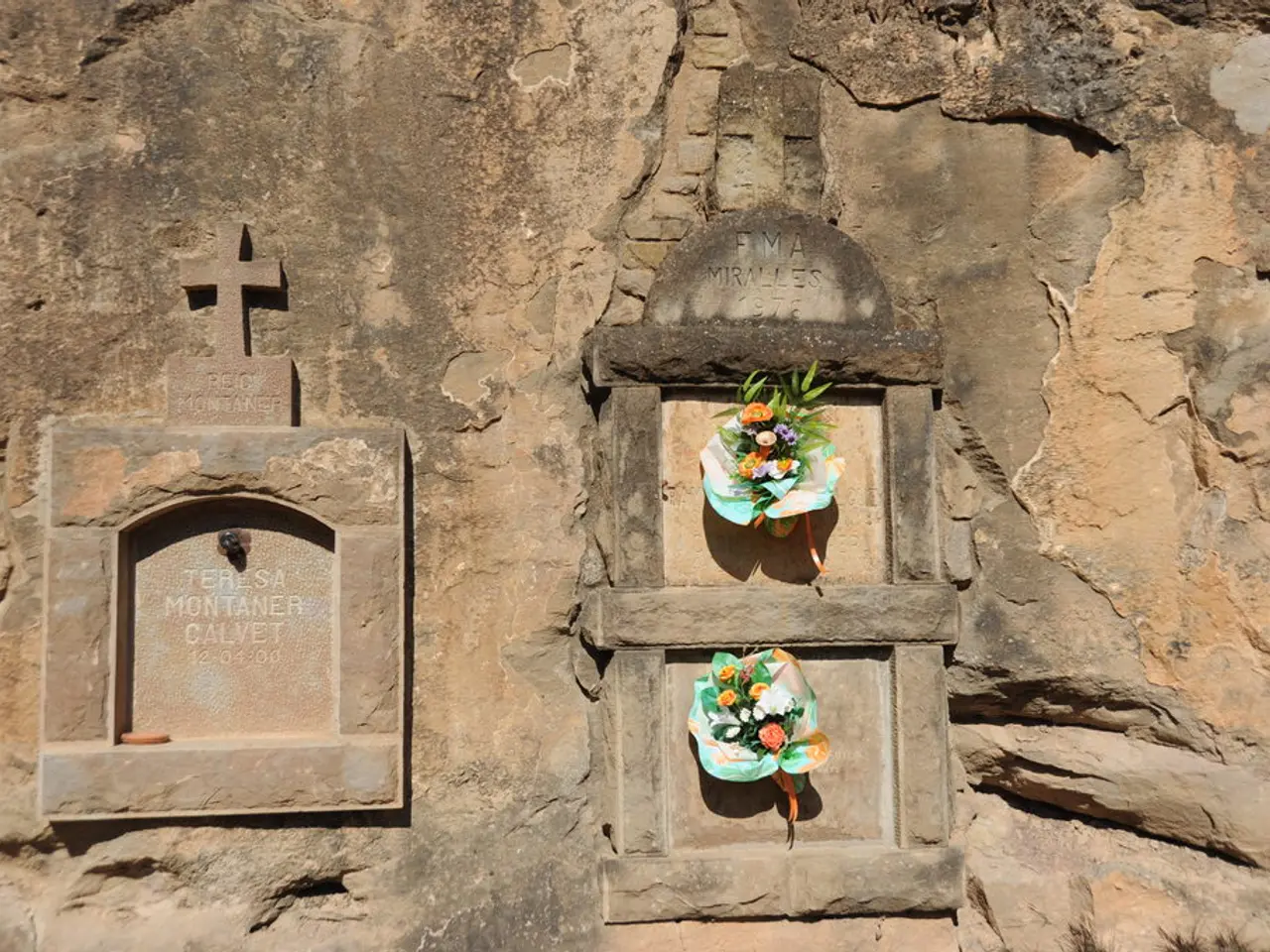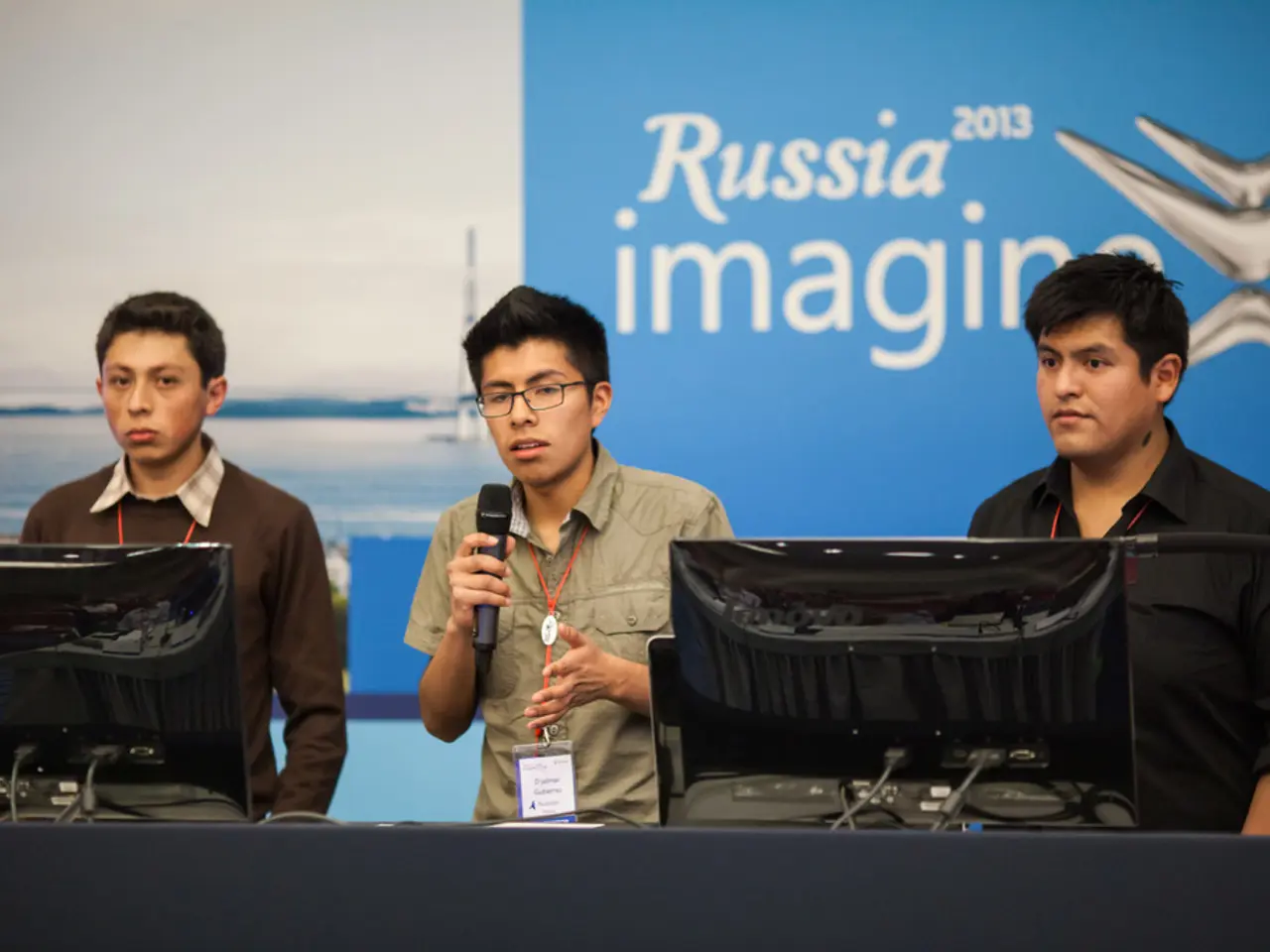Greek authorities save 230 migrants at sea
In recent times, the picturesque islands of Gavdos and Crete in Greece have become unexpected focal points, welcoming a surge in migrant arrivals. This trend can be attributed to a combination of factors, both local and global.
Firstly, Libya, a nation still grappling with the aftermath of the 2011 NATO-backed revolt, has emerged as a key departure point for migrants bound for Europe. The ongoing instability in Libya has contributed to this exodus, making it a popular launching pad for the perilous Mediterranean journey[1][2].
This shift in migration patterns is particularly evident in the increasing use of the Libya-Crete route. This year, arrivals via this route have seen a staggering 350% rise compared to previous years, suggesting that more migrants are choosing this path due to its perceived viability or lack of alternatives[1][2].
Despite efforts to stem the flow, such as deploying Greek navy ships outside Libyan waters, the number of arrivals continues to rise[2]. This indicates that current measures may not be sufficient to deter migrants from attempting the crossing.
The influx has put a strain on the local infrastructure, with Gavdos, a small island with limited accommodation facilities, struggling to house the new arrivals. All migrants are either housed in municipal buildings or transferred to Crete, highlighting the need for better infrastructure to manage the influx[2].
The issue has not gone unnoticed at the European level. Greek Prime Minister Kyriakos Mitsotakis has discussed it with his EU counterparts, recognising it as a broader regional challenge requiring coordinated responses[2].
In response to the increasing migrant arrivals, two ships from the Greek navy have been deployed to control illegal migrant flows. These ships are being used to intercept migrant boats in the Mediterranean and enforce maritime border control[2].
Recent rescues by the Greek Coast Guard have underscored the urgency of the situation. Over 600 asylum seekers were rescued in several operations in the area on Sunday, while over 200 migrants were rescued near the Greek island of Crete on Monday[3].
Images from news agency AFP showed the arrival of refugees at the beach of Agia Galini on Crete, a popular tourist spot, adding a poignant contrast to the usual summer scenes[4].
As the number of refugees arriving in the region continues to increase, the Greek government and international community are working to address this complex issue, ensuring the safety and wellbeing of those seeking a better life while respecting the sovereignty of the host nations.
[1] Al Jazeera. (2021, July 14). Greece struggles to cope with migrant arrivals on Crete and Gavdos. Retrieved from https://www.aljazeera.com/news/2021/7/14/greece-struggles-to-cope-with-migrant-arrivals-on-crete-and-gavdos
[2] The Guardian. (2021, July 15). Greece deploys navy to intercept migrant boats in Mediterranean. Retrieved from https://www.theguardian.com/world/2021/jul/15/greece-deploys-navy-to-intercept-migrant-boats-in-mediterranean
[3] The Associated Press. (2021, July 19). Greek coast guard rescues over 600 migrants in multiple operations. Retrieved from https://apnews.com/article/europe-greece-immigration-mediterranean-refugees-95717e921d2e850df70092b2b370f352
[4] Reuters. (2021, July 19). Migrants rescued by Greek coast guard arrive on Crete. Retrieved from https://www.reuters.com/world/europe/migrants-rescued-greek-coast-guard-arrive-crete-2021-07-19/
- The surge in migrant arrivals on the islands of Gavdos and Crete in Greece, driven by instability in Libya, has prompted discussions at the European level, focusing on the need for coordinated community policies and infrastructure improvements to manage the situation effectively.
- In the realm of general-news, the escalating crime-and-justice issues related to migrant routes, such as the rise in the use of the Libya-Crete route, have become significantly important for vocational training programs in politics and international affairs, aiming to educate future leaders about broad-scale migration patterns and related challenges.






